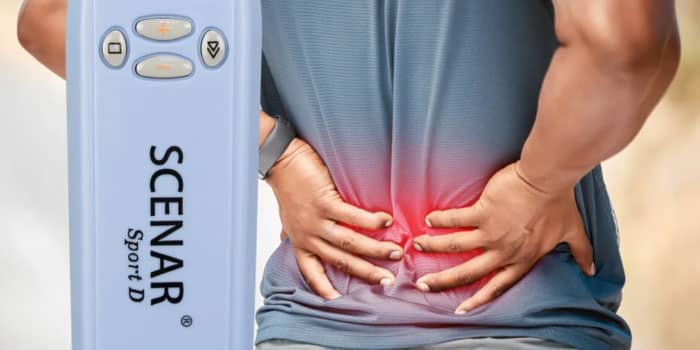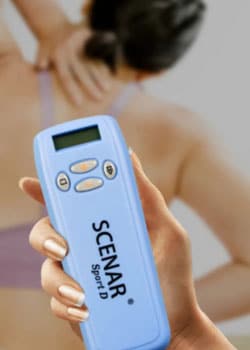The device was developed as a part of a secret Soviet space program. The goal was to create a small, portable, energy economical but most importantly, highly effective device, which could keep the health of the astronauts in top form, and not making use of standard medicines – one universal non-invasive regulator of body functions. Based on the principles of traditional Chinese medicine – acupuncture and zonal contact massage and the achievements of modern electrotherapy, SCENAR brilliantly combines the most up-to-date electronic technology with the ancient healing art of the East, and has brought the highest of state awards to its creators. The original SCENAR devices and treatment protocols were invented and designed by A. Revenko and A. Karasjev and were produced by ZAO OKB RITM – at the special design office.
SCENAR became available to the broad medical community after the breakdown of the USSR and has since been gaining increasing acceptance and application throughout the world. Technology In the base of electrotherapeutic action and in particular – of the electrotherapeutic action of SCENAR, lies the neuro-adaptive mechanism of adaptation, which ensures dynamic equilibrium of the human organism, both with the surrounding environment and with its internal environment – the homeostasis, i.e. the state of being healthy. The regulation of all vital functions is realized because of the close connection and interaction of the nervous and the endocrine systems, the effects of which are mediated through a release from the neural cells of biologically active substances called neuromediators (NM) – classical neuromediators – amines (acetylcholine, noradrenaline, etc.) and amino-acids (glutamine, asparagin, etc.), which are characteristic of the thick myelinated A- and B-neural fibres and have a clearly defined (quick and short) physiological effect; neuropeptides (NPs) – the largest and at present most important group of NMs from a physiological and medical point of view – endorphins, enkephalines, neurotensine, bradikinine and a great number of others (more than 2000 in all). The NPs are the main NM for the thin non-myelinated C-fibres, which are particularly difficult to excite (activate). These peptidergic (producing NPs) fibres make up the major part (more than 70%) of the nervous tracts.
Contemporary science has already unambiguously proved that due to their specific properties (long lasting and extended in time and distant in place effect, formation of complex regulative chains and cascades for the control of multiple physiological functions, powerful analgesic effect etc.) the NPs – these endogen own for the human body pharmaceuticals carry out all autoregulatory and autotherapeutic processes focused on the maintenance and restoration of homeostasis, i.e. the state/ condition of health in the organism. That is why, the main goal of electrotherapy is that a maximal part of the nervous tissue is activated, by activating the peptidergic (producing NPs) C-fibres, which should result in the release of an effective dose of NPs, which are necessary for overcoming the disturbances existing in the organism. This goal can be achieved only to a certain extent by the conventional methods of electrotherapy: – due to the non-physiological character of their impulses, in form and duration, an excitation of the thick A-fibres is mainly achieved, whilst it is practically impossible to activate the extremely thin C-fibres without the risk of damaging the remaining tissue. – the process of habituation of the organism to similar impulses brings about, comparatively quickly, a decrease of their therapeutic effect.


